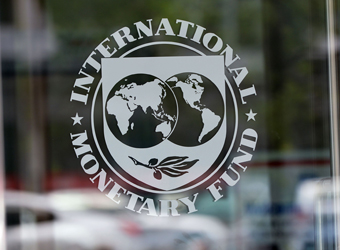Most Egyptian businessmen are finally giving off an air of optimism these days, thanks to the three-year, $21 billion IMF loan program signed in November.
The loan is the largest of its kind on record in the Middle East, and came just days after Egypt allowed its pound to float freely in a bid to end a crippling currency crisis that cut the currency’s value by more than half and prevented imports of consumer goods that even included food staples such as sugar.
Egypt made the right decision. Investors are again assessing the country’s prospects positively. Since November, the pound’s appreciation has been faster than most expected, pointing to a more balanced and efficient market. External flows are helping instill stability in the foreign exchange market. The successful sale of Eurobonds has encouraged carry-trade investors who have invested more than $2 billion since the float, as per the Central Bank of Egypt. Egypt’s stock market is one the best performers in emerging markets and the best in Africa.
Egypt has battled to resuscitate its economy since the 2011 uprising that ended Hosni Mubarak’s three-decade rule and his Islamist successor two years later. Bolstering confidence by following up with reforms will help attract direct investment that in turn creates jobs and reverses declining living standards. Although the economy is in recovery mode, growth is slower than expected at less than 3.5 percent. That’s healthier than many of Egypt’s export-reliant peers in the Gulf region, but not enough to address unemployment.
Exports should get a boost given the cheaper currency, but perhaps more importantly tourism should be a beneficiary of a more affordable currency. The industry has suffered from Russia’s travel ban that suspended all flights to Egypt. Britain and Germany suspended flights to specific tourist destinations and resorts. Tourist arrivals plunged 38 percent to 558,000 in November from a year earlier, according to the official statistics agency. There are reports that some British tourists are starting to come back despite sterling’s steep drop in the wake of Brexit. Remittances from Egyptians working abroad rose 11.1 percent to $4.6 billion in the fourth quarter of 2016, and have become one of the most important sources of foreign-exchange inflows.
There are some obvious consequences to allowing the currency to weaken. The inflation rate reached 28.1 percent in January on an annualized basis, its highest level since December 1989 and eroding consumers’ purchasing power. The spike was largely propelled by a 37.3 percent increase in food prices. Anchoring inflation expectations remains a key challenge for the CBE, especially as subsidy cuts, value-added-taxes and an expanding money supply continue pressure prices. The cost of capital is rising after the 300-basis-point hike delivered by the CBE in November. Inflation will also test the government’s willingness to carry through with the painful reform and rebalancing process.
In part because of faster inflation, automobile sales have collapsed to the lowest in more than three years. Businesses are complaining about reduced domestic demand. The good news is that Egypt’s large consumer market and strong logistical network ties to Asia, Europe and Africa makes it a good manufacturing destination. Over time, manufacturing can help the economy’s export base, while creating desperately needed jobs for its 90 million inhabitants. Egypt’s automotive industry has become one of the largest in Africa, producing more than 100,000 vehicles a year and employing 75,000 workers.
A move into greater local content production could lessen the reliance on intermediate imports (which have become pricier), produce better-paying jobs and develop a sustainable production chain. Manufacturing is expected to be a key piece in the government’s ambitious target of reaching a 7 percent GDP growth. Authorities have set an annual growth target of 9 percent for manufacturing, increasing its share of GDP to 25 percent by 2020. Under these plans, the sector will create at least three million jobs by the end of this decade. However, the industrial sector has to overcome the growing energy challenges, and value investors will wait for a pull-back before diving in.
About the Writer:
John Sfakianakis is director of economic research at the Gulf Research Center.
Source: Bloomberg
